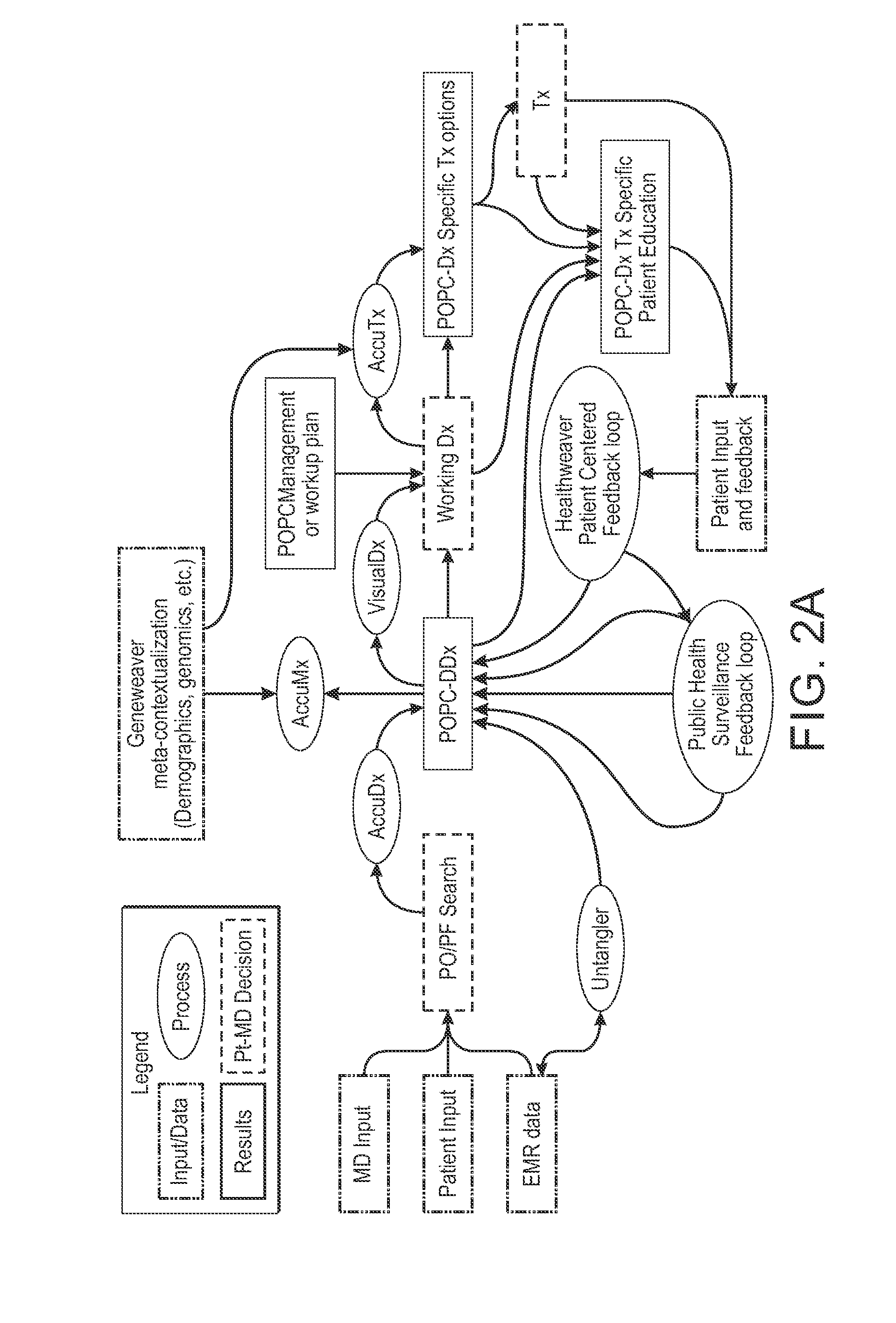System and method for problem-oriented patient-contextualized medical search and clinical decision support to improve diagnostic, management, and therapeutic decisions
a problem-oriented, patient-centered technology, applied in the field of problem-oriented patient-centered patient-centered medical search and clinical decision support to improve diagnostic, management, and therapeutic decisions, can solve the problems of prior efforts not being in the physician workflow and time-consuming to utilize, and not leading to a useful differential diagnosis. , to achieve the effect of improving patient-relevant health education, more accurate and useful decision support, and improving diagnostic accuracy
- Summary
- Abstract
- Description
- Claims
- Application Information
AI Technical Summary
Benefits of technology
Problems solved by technology
Method used
Image
Examples
examples
[0032]1) Search Dx from the EMR problem list—Pancreatitis:
[0033]In this example, as generally represented by the flow diagram of FIG. 5, the physician would have either already made a presumptive Dx of pancreatitis or the Dx is already in the EMR problem list of a hospitalized patient. Using the example of a patient in the hospital having already been diagnosed incorrectly as having pancreatitis by the physician on the prior shift. The physician coming on in the next shift, by pursuing this type of DDx decision support, is presumed to have some doubt for the Dx. Perhaps some of the symptoms do not fit with pancreatitis or perhaps the patient does not have all of the symptoms patients with pancreatitis normally have. The entry points are also illustrated in FIG. 2. The Medweaver system, in its simplest manifestation, would reduce pancreatitis to the core PFs for that Dx. This list of core PFs would have been generated during the creation of the system based on expert opinion(s) and / o...
PUM
 Login to View More
Login to View More Abstract
Description
Claims
Application Information
 Login to View More
Login to View More - R&D
- Intellectual Property
- Life Sciences
- Materials
- Tech Scout
- Unparalleled Data Quality
- Higher Quality Content
- 60% Fewer Hallucinations
Browse by: Latest US Patents, China's latest patents, Technical Efficacy Thesaurus, Application Domain, Technology Topic, Popular Technical Reports.
© 2025 PatSnap. All rights reserved.Legal|Privacy policy|Modern Slavery Act Transparency Statement|Sitemap|About US| Contact US: help@patsnap.com



